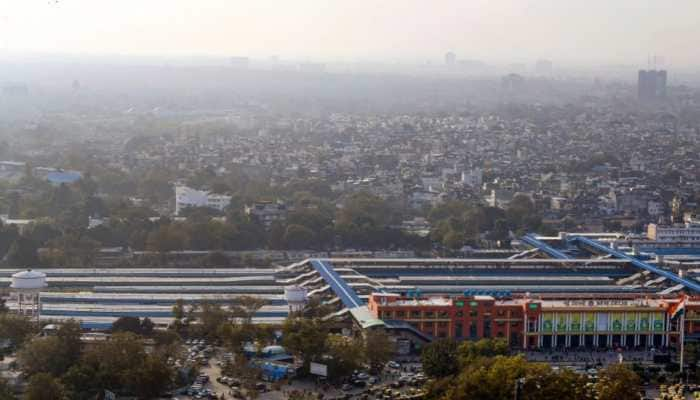After 2014, no more NATO medevacs for wounded Afghans
The American troops gingerly lifted the wounded Afghan out of the ambulance on the dark runway, carrying him in a stretcher up the ramp of the cargo plane.
Trending Photos
)
Forward Operating Base Shank: The American troops gingerly lifted the wounded Afghan out of the ambulance on the dark runway, carrying him in a stretcher up the ramp of the cargo plane.
"Come to me! This way!" yelled a medic, and within seconds the Afghan soldier`s stretcher was secured inside the aircraft.
The 19-year-old had been hit by shrapnel and had just undergone an emergency operation at a US outpost in Logar province, south of Kabul.
Within minutes of touching down at Forward Operating Base Shank, the C-130J aircraft turned and roared down the runway, taking off on a short flight to the capital where the wounded Afghan would be taken to a local hospital.
The evacuation -- ordered at a moment`s notice -- is a routine event for US-led forces in Afghanistan. But after this year, wounded Afghans will no longer be able to rely on Western troops for an evacuation by plane or helicopter.
The vast majority of the 51,000 troops in the International Security Assistance Force (ISAF) are leaving Afghanistan by the end of the year, and they are taking most of their aviation medical squadrons with them.
After 2014, the Afghans will have "sole responsibility for their security and for medical evacuations", said ISAF spokesman Lieutenant Colonel Christopher Belcher.
In the meantime, American advisers are trying to help the Afghans build up their own capacity using ambulances and Russian-made helicopters.
The emergency evacuations are in high demand amid a dramatic rise in casualties among Afghan security forces.
As Afghans took the lead in the fight against the Taliban in the past two years and NATO forces pulled back, thousands of government soldiers and police have been killed or wounded.
The death toll for Afghan troops sky-rocketed to roughly 100 a week in 2013, according to US commanders, and hundreds are wounded every month.
ISAF officers said the Afghan Air Force has made major progress in rescuing its wounded off the battlefield, carrying out more than 1,540 air medical evacuations last year, compared to 329 in 2012.
"The Afghan Air Force has shown strong improvements in casualty evacuation as they take lead and ownership of operations," Belcher said.
The NATO mission finds itself in a delicate position as it tries to prepare the Afghan forces to handle evacuations on their own, while at the same time heeding appeals for help, officers said.
"We`re trying to encourage them to use their resources, and they are getting better," one senior US officer, who spoke on condition of anonymity, told AFP.
"But if someone`s shot in the face or had their hands blown off, we`re not going to let them die."
The majority of evacuations are now carried out by the Afghan army or police, either by ground ambulances or by a small fleet of Mi-17 helicopters, officers said.
Last year, a policeman who was wounded in Wardak province bled to death waiting for an evacuation from government forces, according to a US Congressional Research Service report. His comrades were infuriated at their commanders over the incident.
By the time Afghan senior officials opted to send in a helicopter, it was too late as daylight had faded and the chopper crews are not trained or equipped to fly at night.
Until recently, the average fatality rate for wounded Afghan troops in the country`s south was as high as 44 percent, equivalent to the odds faced by soldiers in the 1800s in America`s Civil War.
But officers say the rate has begun to steadily drop, to roughly 34 percent.
While the army has made some progress improving its first-aid training and medical treatment, the Afghan police have lagged behind.
A Pentagon inspector general`s report released last month found that the Afghan National Police did not have enough medics or supplies to care for injured officers.
Ambulances lacked equipment, hospitals lacked trained personnel and police officers needed more first-aid training to help their comrades after an injury, the report said.
The inspector general concluded that the US advisory effort for the police was falling short.
On board the plane ferrying the wounded Afghan, the expertise of a well-rehearsed emergency crew was on full display. Medical tech staff installed a special valve on the patient`s chest tube to ensure the air in his chest would not expand during the flight.
When they had landed at the base in eastern Afghanistan, members of the 455th Expeditionary Aeroevacuation Squadron had been surprised to learn they were taking two patients on this flight, not one.
The second case was an American soldier, who had suffered a gunshot wound to his leg.
In a sign of America`s drawdown in Afghanistan, officials said the US soldier was not injured in combat but rather from "an accidental discharge" of a weapon.
Stay informed on all the latest news, real-time breaking news updates, and follow all the important headlines in india news and world News on Zee News.
Advertisement
Live Tv
Advertisement







)
)
)
)
)
)
)
)
)
)
